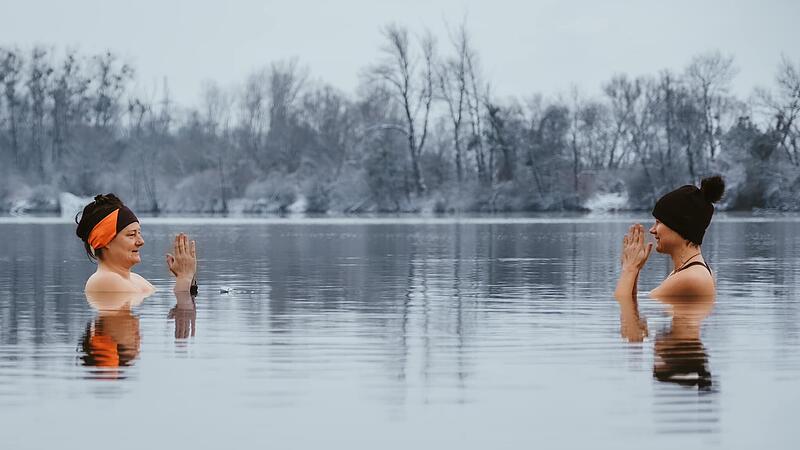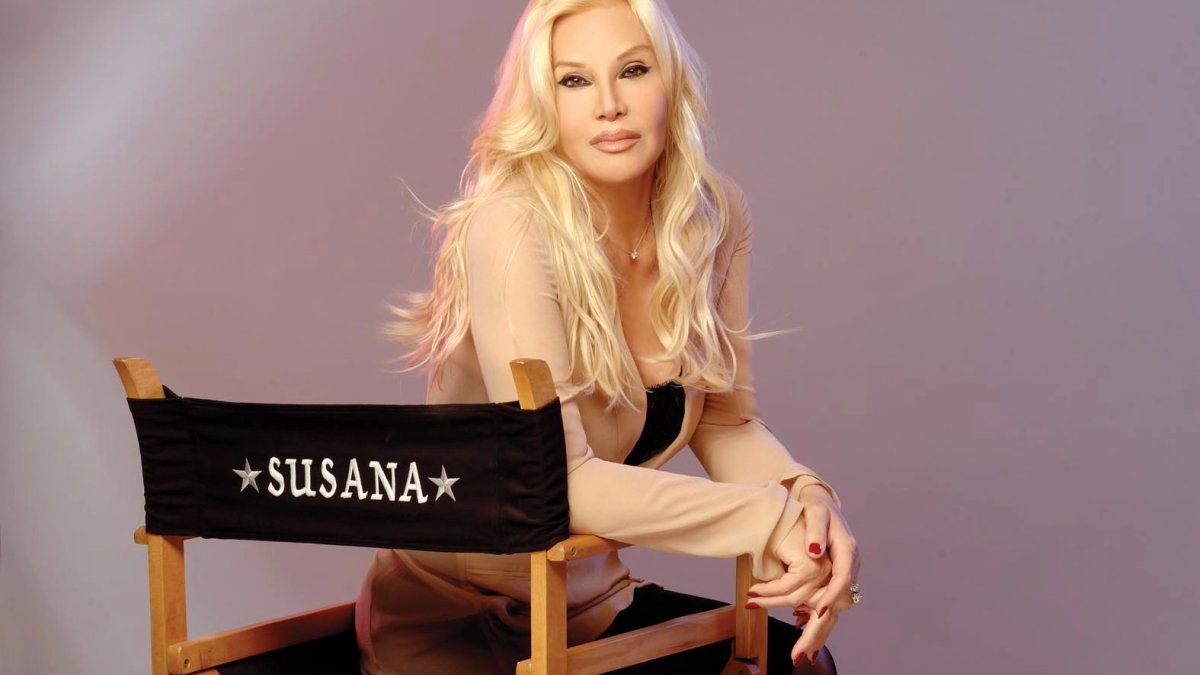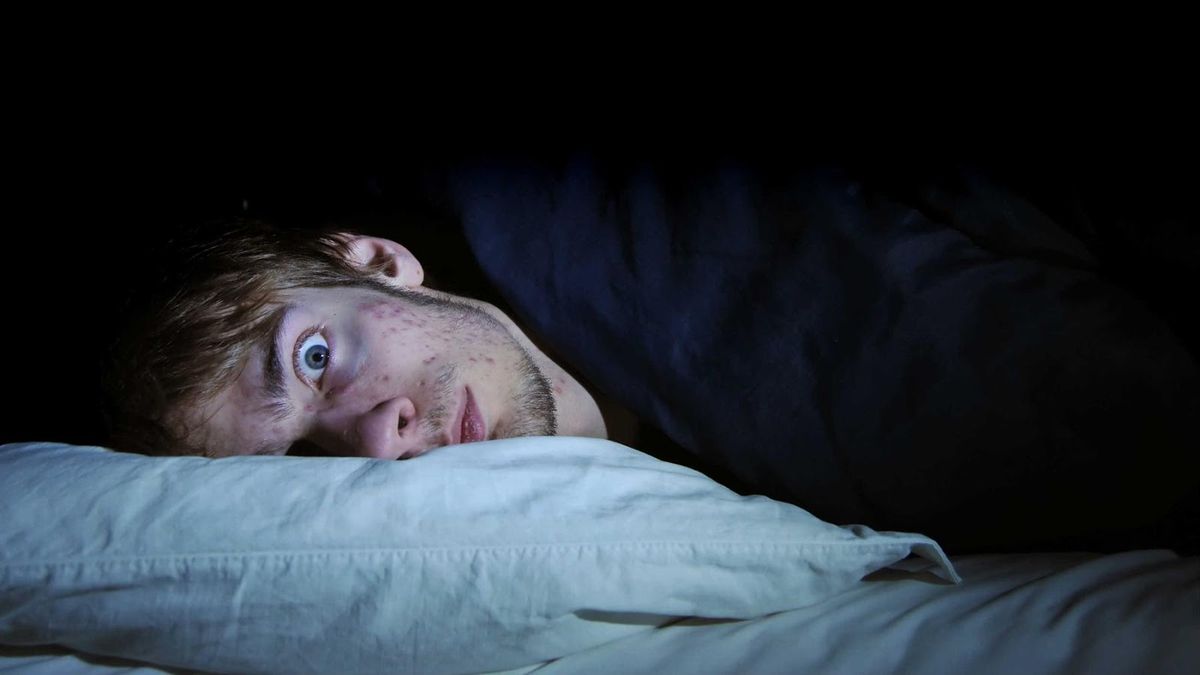Image: private

Image: private
The outside temperature is 10 degrees. The water temperature too. Sandra and Daniela wear warm clothing, lined shoes and jackets. They will soon take them off and go swimming. What is great for cooling down in summer is a real challenge in autumn or winter. “It takes a lot of effort to get into the water every time. The first half minute is the worst,” says Sandra, who claims that she freezes easily: “In the past, the lake water was often too cold for me, even in summer.” Now her record is 8 minutes in 4 degrees cold water.
The question of why arises. Why put up with pain, overcoming, icy cold, freezing? Because you feel better afterwards, almost like a new person, Sandra answers and you can see that she would like to go into the water again straight away. But now, in order to slowly warm up the body again without overtaxing the circulation, we go for a walk. Even half an hour. Only then will it be warm again.
- Also read: Ice bathing: There is strength in the cold [OÖNplus]
Where does the trend come from?
The ice bathing trend spread to us from the Nordic regions a good two years ago. During lockdown times, small groups met, especially in Linz, and regularly went swimming in the Danube, even at temperatures around zero degrees. To strengthen the immune system. And just because of the community.
- Read about it: Off to the cold Danube! Why ice bathing is suddenly so cool
And there are more and more fans of the cold. If you would like to learn how to swim in the cold in a group and under expert guidance, you have come to the right place with “cold guru” Daniel Fetz from Steyregg. The wakeboard professional, who is a double world champion, offers courses in winter and summer (with ice cream from the freezer). It was only with the help of the cold that he found the inner peace and mental strength that made his victories possible, he told the OÖNachrichten.
- Read about it: A portrait of wakeboarding legend Daniel Fetz [OÖNplus]
- And: An ice bath with the wakeboarding world champion
This vote is disabled
Please activate the category Targeting cookies in your cookie settings to display this item. My cookie settings
A man from the Netherlands, Wim Hof (64), demonstrated how it works, what it brings and how it works. He serves as an inspiration and role model for most lovers of cold temperatures.
Climbing Mount Everest in shorts and sandals
The fitness expert and extreme athlete is the figurehead of the growing group that regularly goes into the ice water. Combined with Hof’s special breathing, based on the Tibetan “Tummo” technique, with a little practice you can easily manage eight to ten minutes in the ice-cold water. Hof himself hasn’t been sick in the past 30 years, or so he claims.
Hof regularly goes up Kilimanjaro with groups of ice beginners – in his underwear. This is possible because the participants first learn Hof’s special breathing technique and are mentally prepared for it. The self-proclaimed “Iceman” climbed Mount Everest in shorts and sandals. He can sit in ice water for 112 minutes and 14 seconds, making him the world record holder. He was able to set a total of 26 records.
His method is based on three proven health-promoting activities, namely:
- Conscious breathing,
- Movement exercises such as yoga or gymnastics in the fresh air
- and cold.
The 64-year-old has published a book on the subject in which he talks about his life, gives case studies and simple tips (“The Wim Hof Method”). Even as a child, Hof was magically drawn to the cold. He loved to lie down in the snow and stay there for a long time. As an adult, you don’t have any clothes at all. His wife died in 1995 and Hof raised his four children alone. He has said in interviews that the death of his wife, who suffered from severe depression, strengthened him to continue pursuing his passion. Cold can have an effect on the autonomic nervous system and can be used as an accompanying therapy for mental illnesses.
Cold as therapy?
But it’s not just psychological, “many illnesses can be alleviated, or at least made more bearable, with the help of cold baths.” Countless athletes swear by the power of cold.
However, prolonged cold bathing is taboo for people who suffer from heart or vascular problems. If you are unsure, it is advisable to have yourself checked out before climbing into the ice: “It would be best for middle-aged people to have themselves examined by a doctor before diving into the icy cold,” advises Linz cardiologist Jörg Kellermair. If there is no previous heart disease, there is nothing against it from a medical perspective.
This is how the Wim Hof method works
- For beginners, it is advisable to get used to the cold in the warmer seasons – autumn is a good time.
- First the breathing exercise: Breathe in and out deeply and relaxed 30 to 40 times. Then breathe out completely, sit or lie down with empty lungs for as long as it feels good. After the next deep breath, hold your breath again briefly. Repeat three times.
- Yoga or gymnastics: After meditation, move as feels good. Stretching and stretching or push-ups, sit-ups, etc.
- Finally the cold: To start, take a 30 second cold shower. Ice baths first short, then longer. Your own boundaries shift over time.
Many critics who dismissed Hof as a charlatan became supporters of his method. One of them is the well-known American journalist and author Scott Carney. “I first met Wim in 2011. I thought his claims were dangerous, and he was one of those self-proclaimed gurus,” says Carney. The self-described unsporting journalist later climbed Mount Kilimanjaro with Wim Hof, wearing only shorts. Within 28 hours they were at the summit. Sounds unbelievable, but it is true.
“The body is capable of enormous things”
“Our bodies can achieve enormous things and defy the environment,” says Carney, who has written a book on the subject (“Extremely Healthy”). According to him, a person just needs to come into contact with the “real world” again – and the body will then fall back on abilities that have been stored in the human cells for thousands of years. Our ancestors had to cope with extreme environmental influences. Today people mostly stay inside Heated rooms at a constant 22 degrees C. And only when it gets a little uncomfortable again can people’s potential be teased out.
Many positive effects of cold have been scientifically proven – but the baths must be carried out with a certain regularity. The recommendation is twice a week. When water temperatures are below 10 degrees, it is recommended to wear a hat and keep your hands above water. Because your head and hands cool down quickly.

Image: private
Sandra and Daniela are also preparing for winter by getting into the ice-cold water as regularly as possible. Soon you will only see the heads of the very hard-core people gliding concentratedly over the crystal-clear surface of the water.
These are the benefits of ice bathing
Why it is advisable, as long as there are no health reasons against it, to sit in a cold bathtub or in the nearest lake or river today:
- Cold therapy can be used for chronic inflammatory joint diseases and Spinal diseases Create a remedy.
- It comes to one Increase in leukocytesthe white blood cells responsible for defending against bacteria and viruses.
- Cold optimizes it Hormone production – Adrenaline, endorphins and anti-inflammatory corticoids are released.
- The Circulation is encouraged. Cold is good for heart and lungs.
- The immune system is activated.
- The Sleep quality will be improved.
- The autonomic nervous system is trained.
- By the way, they will Fat reserves activated and fat deposits disappear.
- skin and hair shine.
- anxiety can be dismantled.
Warm showerers should turn down the temperature control every now and then, it seems to be worth it.
My themes
For your saved topics were
new articles found.

info By clicking on the icon you can add the keyword to your topics.
info
By clicking on the icon you open your “my topics” page. They have of 15 keywords saved and would have to remove keywords.
info By clicking on the icon you can remove the keyword from your topics.
Add the topic to your topics.
Source: Nachrichten




